Abstract
The natural variability in forced expiratory volume in one second (FEV1) over 20 minutes was determined in 54 fit hospital employees and 13 patients with restrictive lung disorders. Initial FEV1 ranged from 1.1 to 6.3 1 BTPS. Variability when expressed as absolute change was similar at all levels of FEV1, so that, when expressed as percentage change, variability decreased with increasing FEV1. Smoking habits did not appear to affect variability but activity before the test did. On the basis of these results an absolute change in FEV1 of 190 ml would be necessary for 95% confidence that the change in FEV1 occurred other than by chance in any one individual. This suggests that the absolute change in FEV1 might be a more reliable criterion than percentage change when distinguishing between natural variability and a response to inhalation of bronchodilators.
Full text
PDF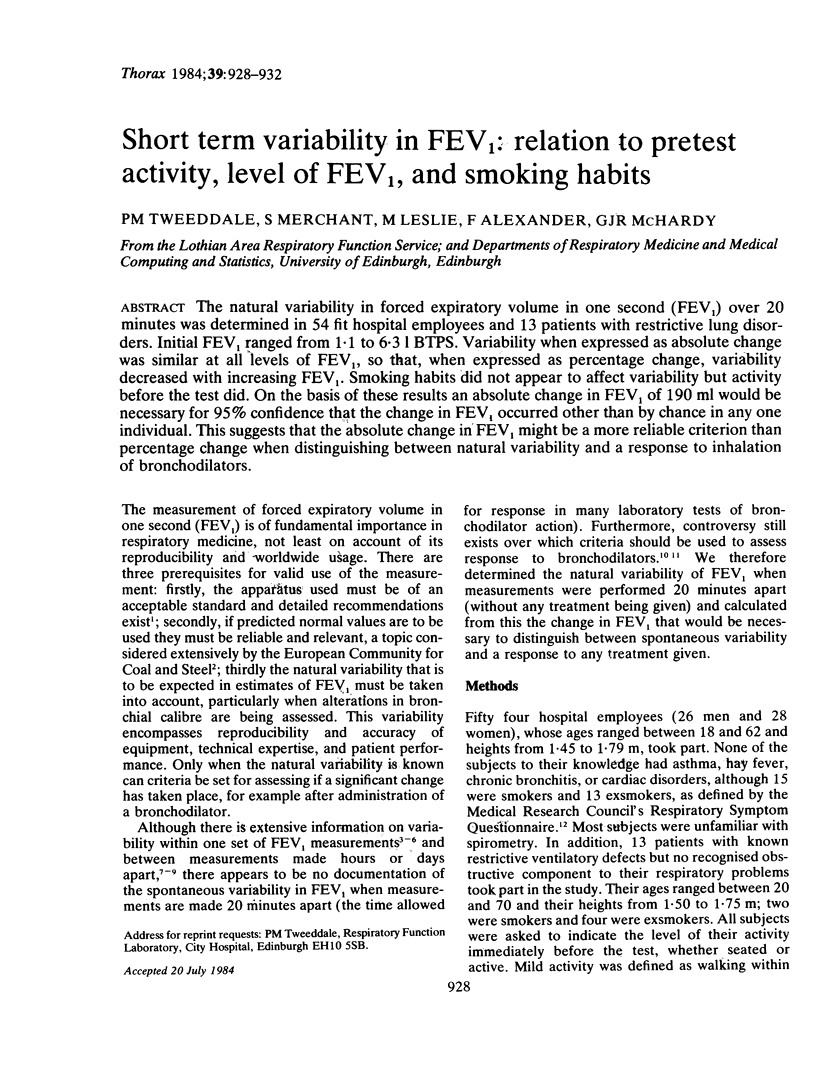
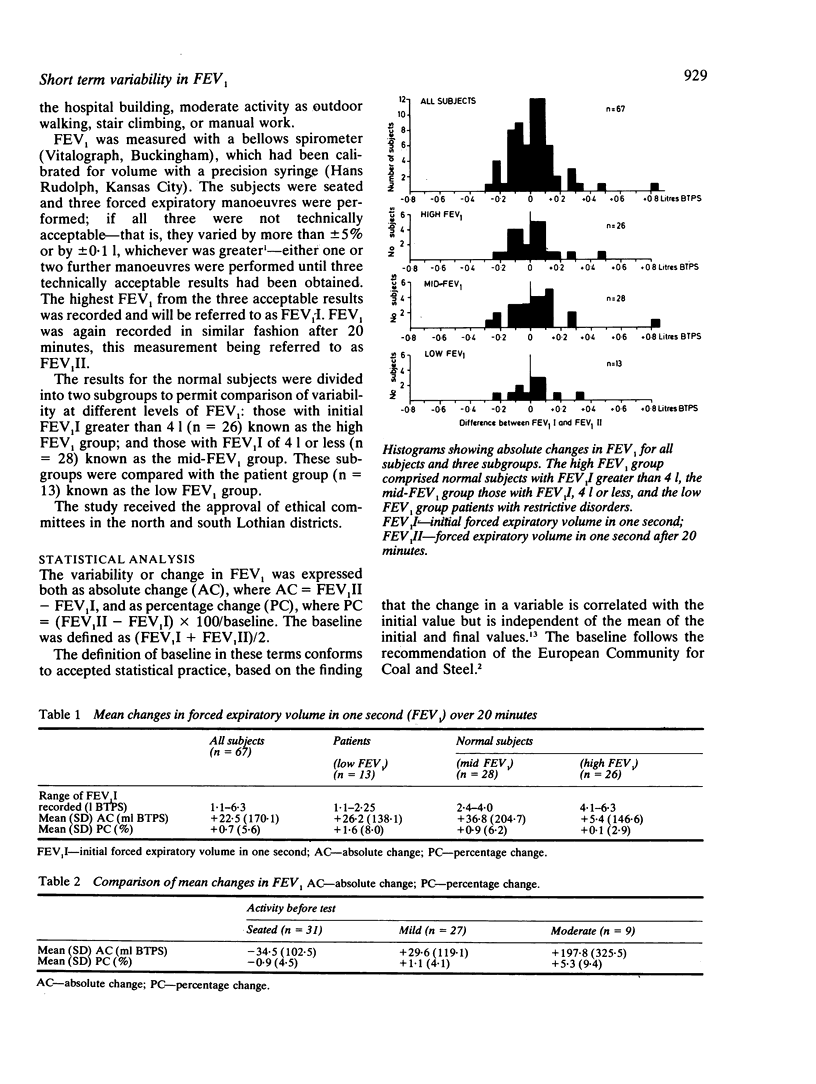
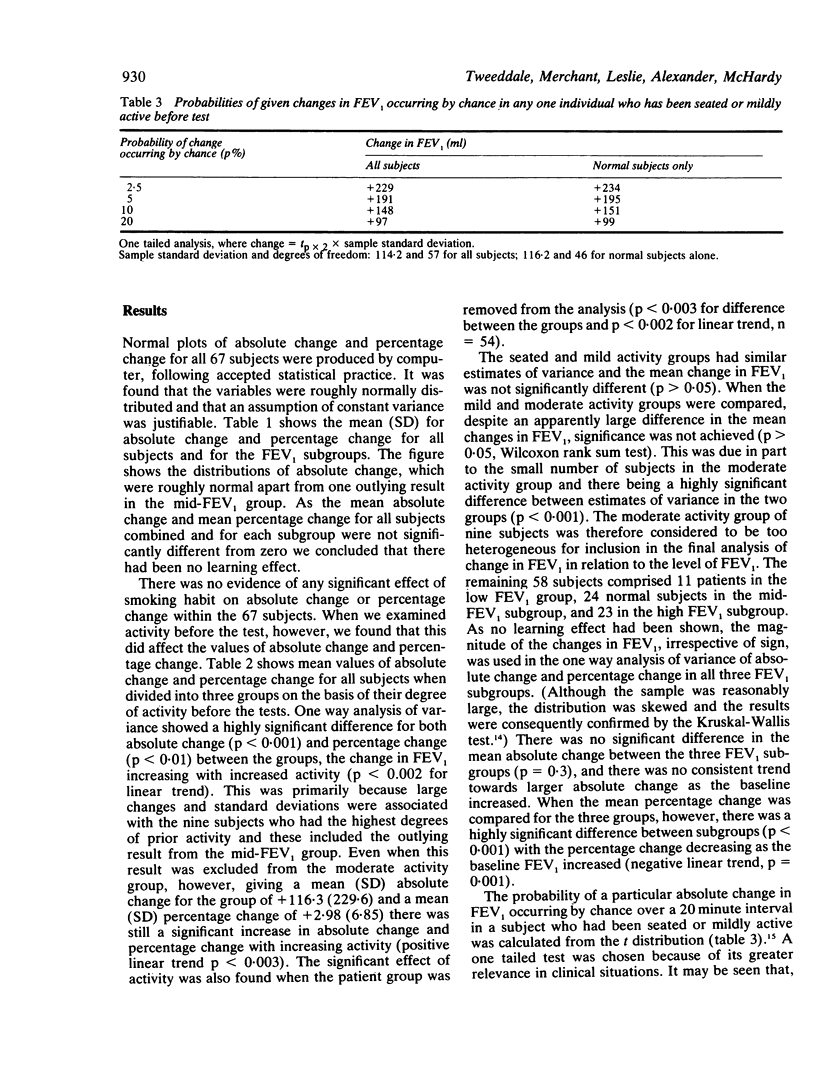
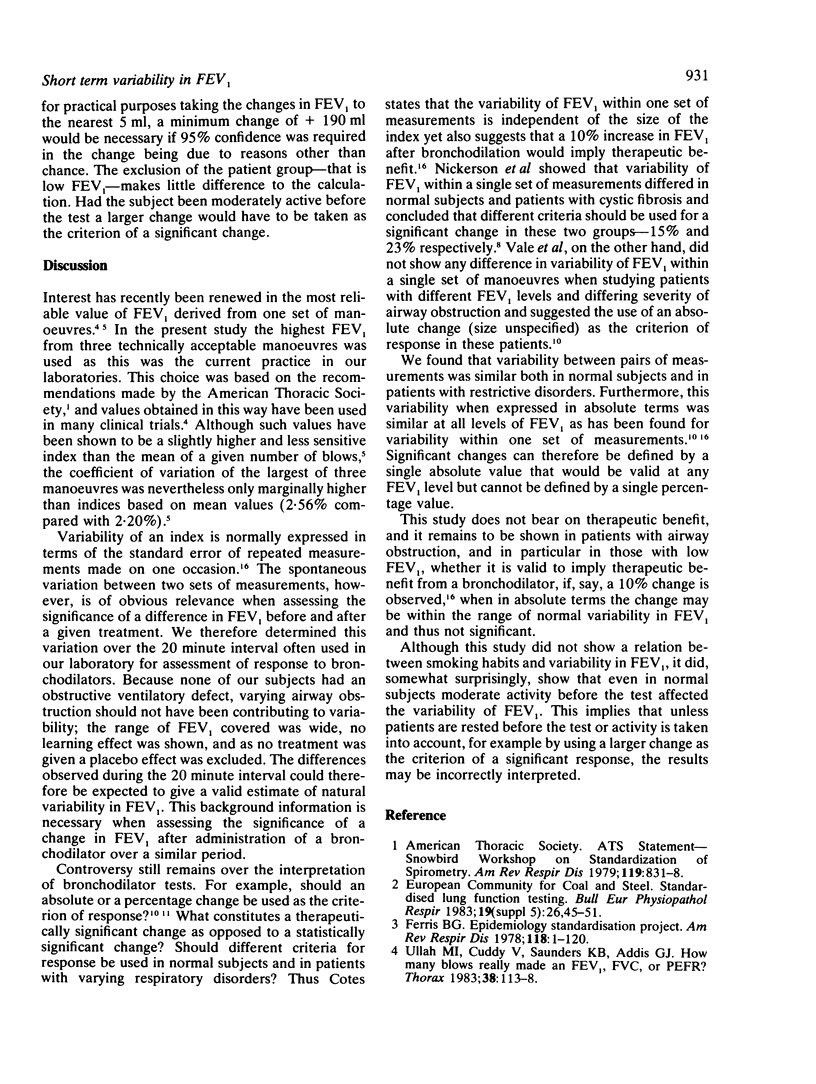
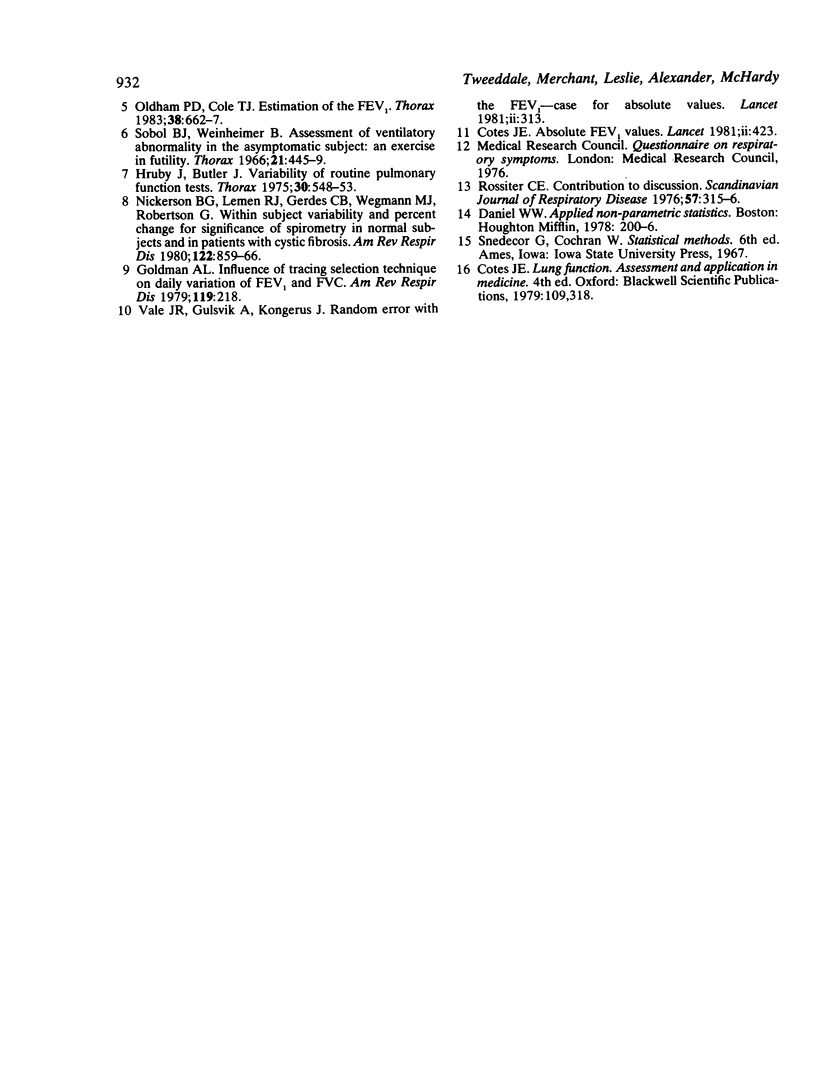
Selected References
These references are in PubMed. This may not be the complete list of references from this article.
- Cotes J. E. Absolute FEV1 values. Lancet. 1981 Aug 22;2(8243):423–423. doi: 10.1016/s0140-6736(81)90870-9. [DOI] [PubMed] [Google Scholar]
- Ferris B. G. Epidemiology Standardization Project (American Thoracic Society). Am Rev Respir Dis. 1978 Dec;118(6 Pt 2):1–120. [PubMed] [Google Scholar]
- Hruby J., Butler J. Variability of routine pulmonary function tests. Thorax. 1975 Oct;30(5):548–553. doi: 10.1136/thx.30.5.548. [DOI] [PMC free article] [PubMed] [Google Scholar]
- Nickerson B. G., Lemen R. J., Gerdes C. B., Wegmann M. J., Robertson G. Within-subject variability and per cent change for significance of spirometry in normal subjects and in patients with cystic fibrosis. Am Rev Respir Dis. 1980 Dec;122(6):859–866. doi: 10.1164/arrd.1980.122.6.859. [DOI] [PubMed] [Google Scholar]
- Oldham P. D., Cole T. J. Estimation of the FEV. Thorax. 1983 Sep;38(9):662–667. doi: 10.1136/thx.38.9.662. [DOI] [PMC free article] [PubMed] [Google Scholar]
- Sobol B. J. Assessment of ventilatory abnormality in the asymptomatic subject: an exercise in futility. Thorax. 1966 Sep;21(5):445–449. doi: 10.1136/thx.21.5.445. [DOI] [PMC free article] [PubMed] [Google Scholar]
- Ullah M. I., Cuddihy V., Saunders K. B., Addis G. J. How many blows really make an FEV1, FVC, or PEFR? Thorax. 1983 Feb;38(2):113–118. doi: 10.1136/thx.38.2.113. [DOI] [PMC free article] [PubMed] [Google Scholar]
- Vale J. R., Gulsvik A., Kongerud J. Random error with the FEV1 = case for absolute values. Lancet. 1981 Aug 8;2(8241):313–313. doi: 10.1016/s0140-6736(81)90569-9. [DOI] [PubMed] [Google Scholar]


